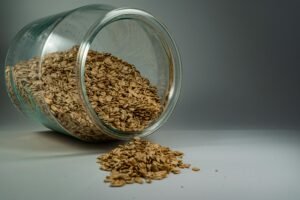The Truth About Flu Virus: Astonishing Cell Entry
Have you ever wondered how the flu virus manages to invade our bodies so effectively? Scientists have been working tirelessly to unravel this mystery, and their findings are nothing short of fascinating. Let’s dive into the world of influenza A virus and explore its sneaky tactics for cell entry.
The Viral Invader’s First Move
The influenza A virus, like a stealthy burglar, begins its assault by attaching itself to the surface of our cells. It accomplishes this feat using a protein called hemagglutinin (HA), which acts like a key searching for the right lock. The “lock” in this case is a molecule called sialic acid, found on the surface of our cells.Once the virus finds its target, it doesn’t waste any time. It quickly triggers a process called endocytosis, where the cell essentially swallows the virus, bringing it inside. This is where the real action begins.
The Journey Within
Inside the cell, the virus finds itself trapped in a bubble-like structure called an endosome. But this is all part of the plan. As the endosome travels deeper into the cell, it becomes more acidic. This change in acidity is the virus’s cue to make its next move.The acidic environment causes the viral membrane to fuse with the endosome membrane. It’s like the virus is performing a magic trick, disappearing from the endosome and reappearing in the cell’s cytoplasm.
A Race to the Nucleus
Now free in the cytoplasm, the virus faces its next challenge: getting its genetic material into the cell’s nucleus. This is crucial because influenza, unlike many other viruses, replicates in the nucleus.The virus’s genetic material, packaged in structures called viral ribonucleoproteins (vRNPs), hitches a ride on the cell’s own transport system. It’s like taking an express train straight to the heart of the cell.
Hijacking the Cell’s Machinery
Once inside the nucleus, the virus begins its health. It uses the cell’s own machinery to replicate its genetic material and produce viral proteins. It’s as if the virus has found the cell’s control room and is now calling all the shots.
The Great Escape
After replicating, the new viral components need to leave the nucleus and assemble into new virus particles. These newly formed viruses then bud off from the cell surface, ready to infect neighboring cells.
Why This Matters
Understanding these intricate steps of influenza virus cell entry is crucial for developing new strategies to combat the flu. By targeting specific stages of this process, scientists hope to create more effective treatments and prevention methods.For example, researchers are exploring ways to block the initial attachment of the virus to cells or to prevent the fusion of viral and endosomal membranes. These approaches could potentially stop the virus in its tracks before it has a chance to hijack our cells.
Staying Healthy
While scientists continue their important work, we can do our part by maintaining good hygiene practices. Regular handwashing, covering our mouths when coughing or sneezing, and staying home when sick can all help prevent the spread of influenza. Remember, knowledge is power in the fight against the flu. By understanding how the virus operates, we’re better equipped to protect ourselves and our loved ones.

Disclaimer: This article is for informational purposes only and is not a substitute for professional medical advice. Always consult with a healthcare provider for medical concerns.
Content source: The information in this article is based on scientific research and studies on influenza A virus cell entry mechanisms.
















